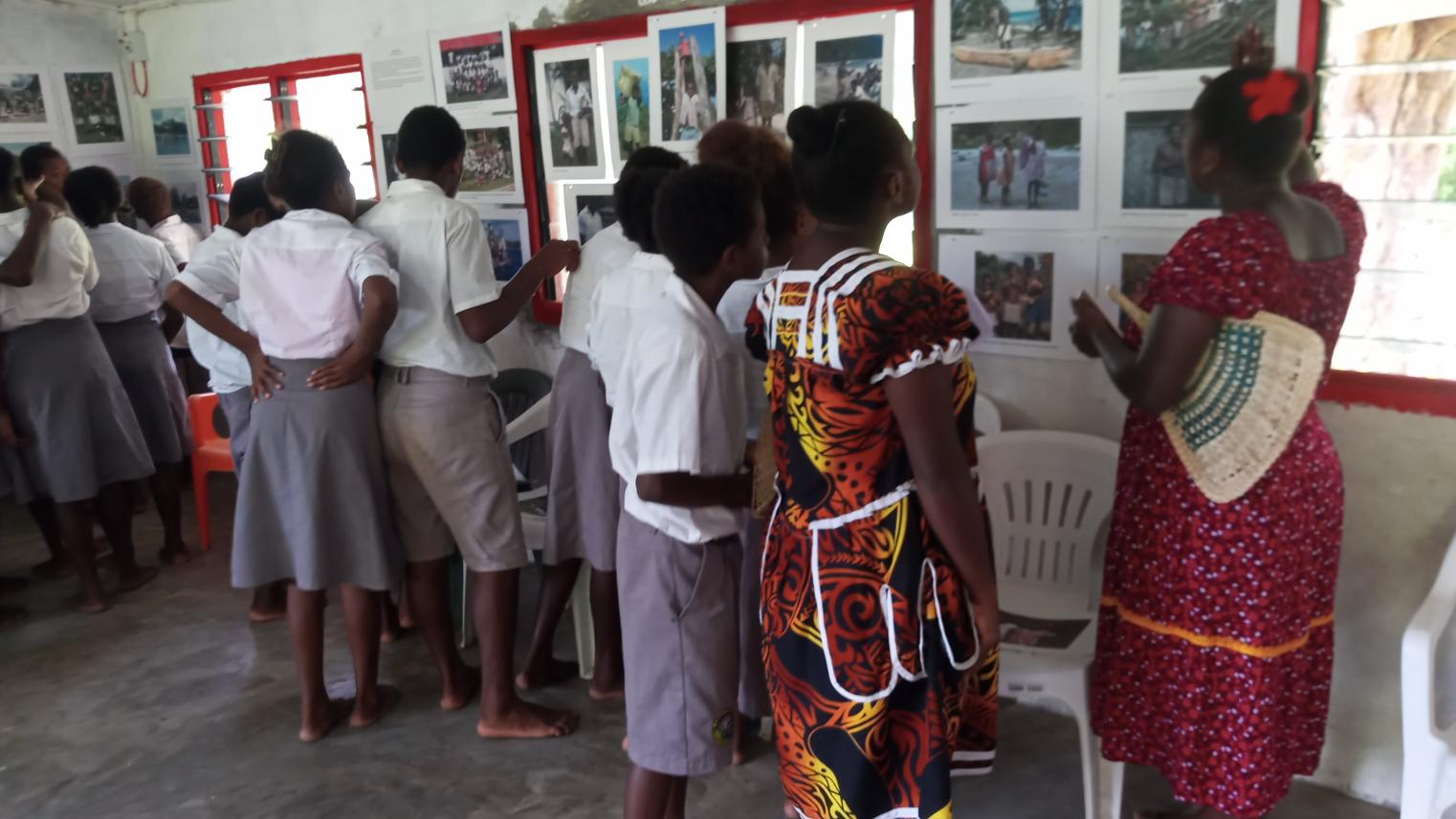Bringing historic photographs home to Southwest Bay, Vanuatu

The Pacific Manuscripts Bureau recently collaborated with the Vanuatu Cultural Centre (VKS) to return rare historic photographs to rural communities in Southwest Bay, Malakula, Vanuatu. Southwest Bay is a remote location with few services but with a vibrant population. These photographs were made by Presbyterian missionaries Conrad Stallan, Neilson Whyte, Lynette Walker and Ian Taylor from the 1940s to the 1960s, a time when local people did not have the means to create their own photographs. Photographs of this area before the 1940s are very rare.
Following recent re-discovery of the photographs, Kari James of the Pacific Manuscript Bureau (PAMBU) worked with the elderly missionaries or their families to scan, annotate and archive them. Although many of the photographs are now available on the PAMBU website they are still not accessible to most of the people whose forebears, history and culture are shown. Many remote communities in Vanuatu do not have access to supplied electricity or internet and mobile phone reception is often poor. Although the Vanuatu Cultural Centre has an extensive archive of historic photographs these may not be accessible to rural community members, who may not know of them, or for whom travel to Vila is expensive.
The project was conceived primarily to bring the photos back to Southwest Bay, but also as a pilot to test the logistics of mounting a regional exhibition, to test community response, and to raise local awareness of the extensive photo archives in the VKS and overseas collections. The two project outputs included local exhibitions and a booklet of the photographs to be available to Southwest Bay community members as a permanent record they can keep in their homes. The exhibition was coordinated by VKS Film and Archive Manager Ambong Thompson and Curator Kaitip Kami with the support of CAP visiting fellow Dr Paul Mitchell. Kaitip curated the exhibitions in Wintua and Lawa villages in Southwest Bay, including spirited discussions with school students and community members about the historical context of the photographs. In Southwest Bay community elders provided further information and local context for the photographs. This information has been added to the photo booklet, which is annotated in Bislama, the national lingua franca, as English is rarely spoken in these communities.
In an age of global telecommunications, the value of mounting local physical/tangible exhibitions was questioned. However, we found many strengths in researching and presenting these photographs locally. The local elder review of photographs provided information by which community members made connections back through the generations to their great grandparents, a possibility which will be lost if we wait for rural internet connectivity. The many stories arising from the photo display were once again circulated in the community where they retain their authority, vibrancy and relevance. One set of photos, not seen before in the community, related to a French and British punitive raid in 1903, from which stories had circulated in the community ever since. One man stood contemplating the photos and said, “So the stories are true”. To our great surprise the sole photograph of the original mission house, now long gone, was extensively studied by many viewers. Perhaps the most moving aspect of the exhibition was the reactions of community members to their family photographs. Many scrutinised the photographs for extended periods, took photos on their mobile phones and even made notes of some of the accompanying text. A young girl was pleased to be photographed in front of a photo of her great grandfather. An elderly lady stood staring at a photograph and said, “My father died when I was very young. Today, I just saw his face”.
There are many tensions inherent in images of community viewed through a missionary’s lens. These tensions are recognised and interpreted not just by academics but also by community members, for whom this history is most important. Regardless of the contextual framing of these photographs they express the mutual friendship and respect shared between missionary and communities and illuminate the ongoing strengths of local leadership and community through time. Returning these photographs to local communities provides a catalysing reference point for elders in teaching their history to their young people, and a benchmark to ground-truth emerging histories into the future.
The project was supported by the ANU Pacific Institute and the Pacific Conservation and Development Trust. It was supported by the families of the missionaries involved who reviewed the final draft of the photograph booklet. Earlier historic photographs were supplied by the Pitt Rivers Museum in England, the Martin and Osa Johnson Museum in USA, and the University of Auckland Pacific Collection and Presbyterian Research Centre, Knox College, New Zealand.